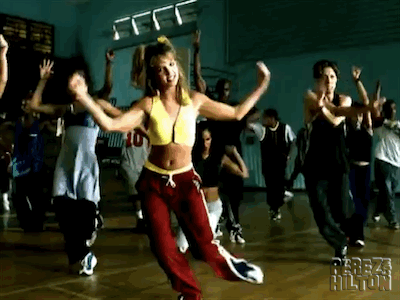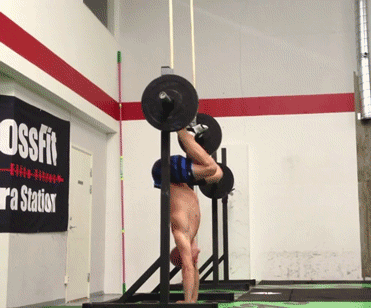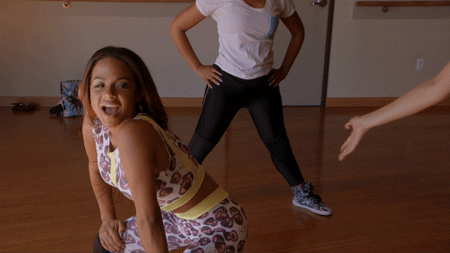The squat is beautiful. It's one of the two functional movements that you need through life, the other being some version of a deadlift. There are many other functional movements, but few are more valuable than being able to safely get down to somewhere and safely get up from somewhere. I used to train a man who had such bad mobility that he wasn't able put on his own socks. He fell off his bike at age 73 and couldn't get up after. He wasn't hurt, he just couldn't get up. He lay there for more than an hour. Remember the Help! I've Fallen and I Can't Get Up! lady? Everyone made fun of her, but it's not so funny meow is it?

Knowing that 20% of people over 65 who fracture their hip will die within a year compounds this idea. Squatting helps you move. Here's how: If your body is used to regularly changing loads (think dancing the Cotton-Eyed Joe), changing directions of movement (Electric Slide), and is able to bear your weight even in a very compromised position (Stanky Leg), not only are you less likely to fall but you're also less likely to get hurt during the fall and recover faster from surgery if you need it. These things are also true for general activity for all ages—having strength through an entire range of motion (ROM) helps you prevent injuries. Look no further than my beloved Britney for inspiration.

You think she's got shoulder and back issues? No way.
A squat takes your ankles, knees, and hips through a full ROM, and isometrically engages your feet and spine as well. In a perfect world, we should be able to do an ass-to-heels squat until the day we die.



This last one is the Prime Minister of Singapore, Lee Hsien Loong, age 67, squatting while visiting the White House. Maybe being the highest-paid government official in the world buys you phenomenal ankle dorsiflexion? I looked everywhere for a photo of President Trump squatting or crouching down in comparison but...there don't seem to be any.
You MUST be able to get up from the floor.
We will talk about squatting plenty as this blog builds, but these are the principles of beginning squatting:
1) Squats are just sitting down and standing up. Everyone can squat. One time a client told me his doctor told him to never squat again and I said, "OK, but how will you poop?" He just stared at me, I don't know why.
2) Anything goes in terms of movement. All of the strict commands and dire warnings about not squatting past 90 degrees, not letting your knees go over your toes, not letting your spine flex (bend forward), sitting back on the heels as far as possible, etc, are nonsense unless you're a competitive squatter. If you're moving a ton of weight, you want to move in the most ideal way. But if you're just moving your body around, feel free to let your spine and limbs move into more natural positions.
Because very few people would get something off a low shelf like this, a traditionally good squat:

But many people would get something off a shelf like this, violating many "rules":

While many other people would get something off a shelf like this:

And that's the one we're really worried about. Because if this person needs to move downward, she's gonna have a real tough time going upward again.
Being able to stand up from a chair, from a car, from a kayak, and from the floor are all essential life skills. Not "It would be nice to be able to stand up from the floor." You MUST be able to stand up from the floor. If you're 23, it doesn't seem so relevant now. But volunteer to visit some seniors and you can easily see the positive and negative variations that come with aging.
(ADD TANGENT: don't volunteer right now? Might want to think about it. Completely aside from how it benefits other people, volunteering is well-documented to be better for your own health. Studies show improvements in self esteem, life satisfaction, reduction in depressive symptoms, reduction in psychological distress, and more. And lest you think that volunteering might be associated with better health because people in better health are freer and more likely to volunteer, that reverse causation was not found in this impressive study of more than 10,000 people over several decades. They came up with some other gems too, like how two thirds of men responded that they were sexually satisfied over time, but only half of women reported the same.)

The idea of functional training is to move your body as realistically as possible, because humans move in literally limitless ways. In real life, you're almost never going to be moving in an ideal squat pattern, so go ahead and let those knees come forward over the toes. Check out Barack here.

(He looks very similar to my own demo position above, doesn't he? Yet another thing we have in common, call me any time, Barry.)
If you can't squat flat-footed, follow Obama's lead and crouch down if it's easier. The beauty of bodyweight training is that it's gentle enough to withstand all kinds of changing loads. This means you basically can't do it wrong. Once you start getting stronger and you're ready to add speed, jumping, or weight, that's when you want to start training more ideal patterns.
3) I like using two approaches to #squatting: assisted and unassisted. Holding onto something to help you sit lower helps train a bigger ROM in a safe and doable way.

On the other hand, doing it completely free of assists helps train the necessary strength to do it in real life. Both are valuable, so don't feel like you're cheating by holding onto a bar or handrail to help you sit lower. Once you have the strength, however, it's cheating and I will yell at you.
4) Don't do this.

4) As a general rule in Mia-Land, almost anything is made better by being barefoot. Do your body a favor and spend some time each day barefoot, squatting or just walking around the house. Like anything else, being barefoot needs to be trained if you're not used to it, so start slow. Supportive shoes do the work for you and that causes problems when they're taken off. Many people have spent so long in shoes that their balance is far worse when barefoot than in shoes. So spending some time without any shoes or socks on will help remind your feet of all the intricacies of staying upright.
Tl;dr version of this blog by way of the inimitable Christina Milian: Dip it low. Pick it up slow. Roll it all around. Pop it out like your back broke. Pop. Pop. Pop that thang.






